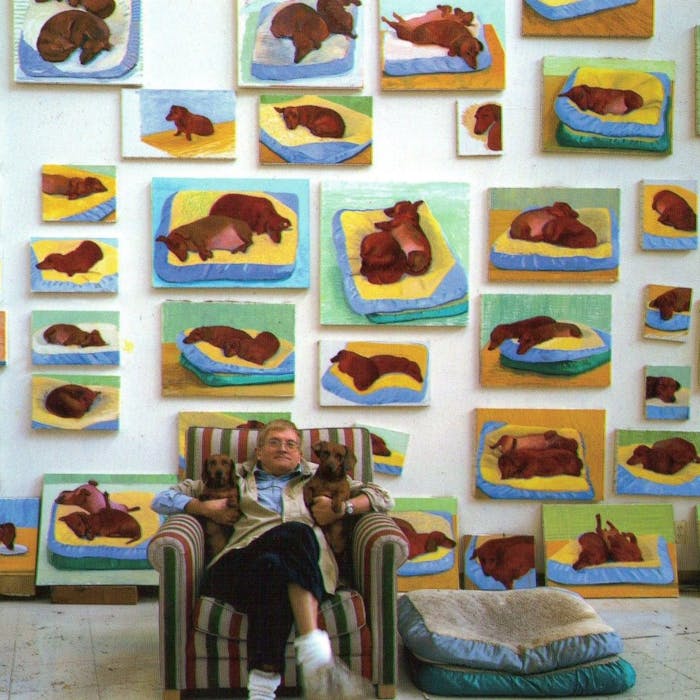
David Hockney’s Dog Days - and his digital art
The iconic British artist David Hockney has turned his distinctive hand to a wide range of subject matter - from swimming pools in California in the 1960's, through portraits (including of himself) and, more recently, woodland scenes in his native Yorkshire, and an increasing portfolio of digitally created art. In 1995 he staged an exhibition of work that had been prompted by his dogs.
The show, entitled Dog Days, was held at Yorkshire’s famous Salts Mill in Saltaire - home to one of the largest collections of Hockney's art. At the exhibition Hockney presented 45 paintings of his beloved dogs Stanley and Boodgie.
Hockney's portraits of the dogs stemmed from an extensive study of the two. The series was three months in the making and required meticulous planning. Hockney set up easels around his home in order to capture them quickly in various natural poses, and he told the Telegraph that 'only the owner could have painted that', due to his affection for them.
Hockney was inspired to buy a dachshund puppy after falling in love with his neighbours' dogs. Stanley came first and Boodgie arrived two years later. Their bed-cushions were in Hockney’s studio, and they were allowed to sleep in his bed too.
Hockney saw his dogs as having two very distinct personalities. Stanley would follow him everywhere unless it was raining, or if someone was dispensing food. Boodgie was said to be more of a loner. The Dachshund breed is known for being loyal and for forming strong attachments to their owners, and Stanley and Boodgie fit this mould for Hockney. They would follow his every move: if he got up, they got up. If he went to bed, they would go to bed too. They would eat lunch at the same time as him. Indeed, Hockney's attachment was such that he made wry comments like 'They’ll eat anything I eat and I’ll eat anything, me and I just let them run round naked, don’t I boys?'
Born in Bradford in 1937, Hockney is considered one of the most influential British artists of the 20th century. He has been a painter, draftsman, printmaker, stage designer, and photographer, and latterly has been experimenting with the use of digital media to create new works. Since 2009, he has produced hundreds of portraits, still life paintings and landscapes using the Brushes iPhone and iPad application. In 2018 he used an iPad to design a stained glass window at Westminster Abbey to celebrate the reign of Queen Elizabeth II. It is located in the north transept of the Abbey and features a hawthorn blossom scene in Yorkshire.
Further reading
Links to external websites are not maintained by Bite Sized Britain. They are provided to give users access to additional information. Bite Sized Britain is not responsible for the content of these external websites.
